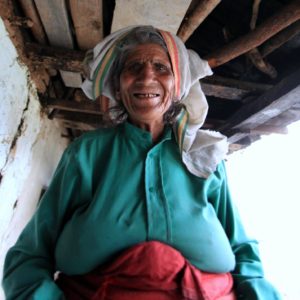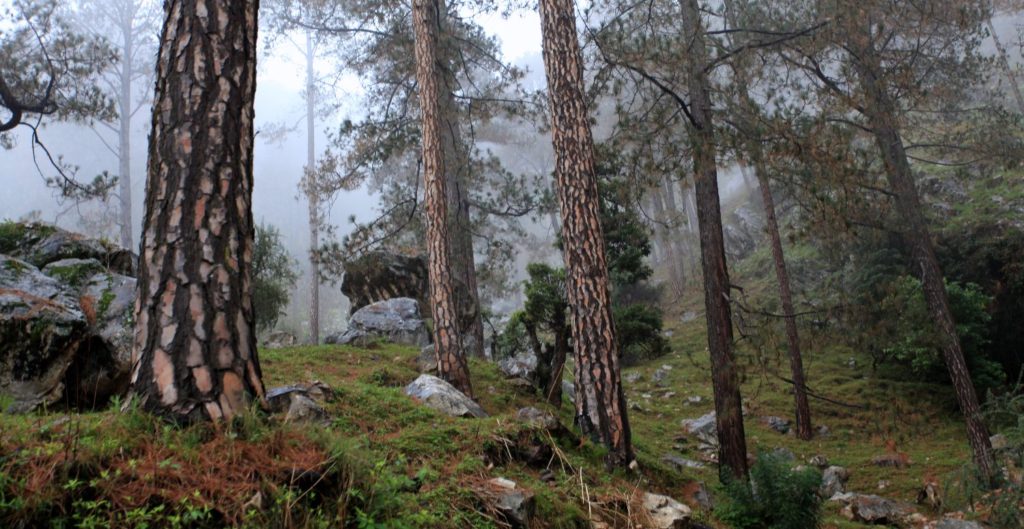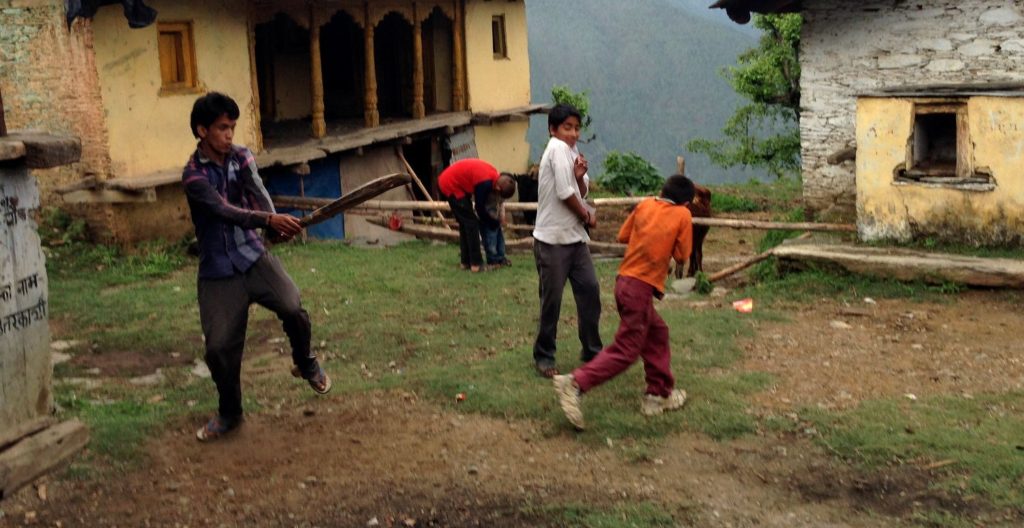“All phenomena are the result of a combination of transitory factors. This is the way enlightened beings relate to everything. Their world is made of rainbows.”
Matthieu Richard
The drive down the mountain to Uttarkashi feels like a continuous, six-hour exhale. I wake in the middle of the night in another hotel perched over the riverbed to a second dream that the Ganga is a benevolent force animating millions of tiny lives, including mine. And not only does she know I’m here, but she loves me. The dream seems real until I remember I’ve been very sick with a fever, and it has been four days since a real meal. In the early morning light, over the hotel balcony are a dozen or so families tending crops in the dry riverbed. I decide that tomorrow, instead of going to Shiva’s abode, Kedarnath, I’ll go to Badrinath, the abode of Vishnu, because the “god of preservation” seems like a much gentler alternative than the “god of reabsorption.”

Mid-morning, we ascend a sharp, 2000 feet up a mountain to a Chauhan village inhabited by Kshatriyas, members of the warrior caste. We continue even higher to the village of Sangrali, a completely Brahmin village in the middle of verdant green rice fields. Standing in a courtyard of stone buildings with charcoal slate roofs, eight young boys roll and chase a wheel they made from simple wire around an old brick courtyard while the girls shyly stand to the side. Old ladies with deeply-lined faces and mouths with few teeth wear well-worn cardigan sweaters. Young women in brightly patterned saris and gold jewelry hold large woven baskets over their shoulders while tending the fields. A woman at the center of the courtyard grinds grain with a twelve-foot wooden pestle into a stone mortar. There are no machines in their daily life.
As the sun sets, we drive to the Vimleshwar Temple, an empty temple to Lord Shiva at the top of the mountain. A rainbow casts its light southwest of the Nandi Mountains. Steep rolling hills seem to boil up from the earth, evidence that every year the Himalayas are being pushed northward by the Indo-Australian tectonic plate.
The forest floor is a blanket of golden pine needles of deodar trees, the wood that is used to build the temples. Unlike anywhere else in India I’ve traveled, there are many trees in the Himalayan region because, in 1970, a group of peasant women threw their arms around the trees that were designated to be chopped down. Within a few years, this tactic, also known as tree satyagraha, or holding truth, had spread across India, ultimately forcing reforms in forestry and a moratorium on tree felling in the Himalayan regions. Tree hugging goes as far back to 1730 when the first tree huggers (294 men and 69 women belonging to the Bishnois branch of Hinduism) died while trying to protect the trees in their village from being turned into the raw material for building a palace. They literally clung to the trees while being slaughtered by foresters. But, their action led to a royal decree prohibiting the cutting of trees in any Bishnoi village. Now, those villages are virtual-wooded oases amidst an otherwise desert landscape.

This temple is like most in India, replete with large brass bells and a fire pit at the center, representing the goddess. A snake made from shiny copper rises from its center, surrounded by stone lingams painted with yellow ochre. The forest floor grows a large thicket of pink rhododendrons, while on the next hill over, another small temple looks just like this one. Thousands upon thousands of these tirthas dot the landscape of India. If the gods played hopscotch, with every hop they took, they’d land on a tirtha. The soil itself is thought by many rural Hindus to be the home of divinity. In villages across India, the land itself is the body of the goddess, and the tirthas are crossing places between worlds, linked by the foot prints of pilgrims. The pilgrim that climbs to the hilltop shrine is thought to stand on a threshold between the world of humans and the world of gods. It is through the natural world and human imagination that the mythic world is accessed.
I squat barefoot in the courtyard to photograph the stone bull Nandi, the vehicle of Shiva, and one of the boons of the churning of the ocean, bathed in the light of a passing day that I would cling to if it would let me. My guide, Faisal, warns about the possibility of my feet being sucked on by leeches, but I laugh. He’s got to be kidding. We drive back down the mountains and only minutes pass before the drilling sensation begins between the third and fourth toe of my right foot. A prophecy is unfolding as a small, dark leech that has already bored its body length in half. I rip it out and fling it out the car. By the time we reach the hotel at the base of the mountain, another leech has found its way into the opposite foot, even after I’d thoroughly checked. Blood is running into the shoe. While applying alcohol and bandages, I can’t help but wonder at this world; rainbows and a beautiful cow with one horn covered in manure, kind old ladies with pendulous breasts and creviced faces, a turning wire wheel on a well-worn path, children in the arms of their fathers, blood-sucking leeches, beauty and ugliness, clinging and aversion, all appearing and disappearing within the unblinking gaze of a flowing river. We look upon a world that seems (to our senses) to be solid, and cling to it like leeches as if it is real, when it’s more like light. And, when it changes, we suffer. We are like little children who cry at passing rainbows. This is our precious human life.















2 replies on “This Is Our Precious Human Life”
Love this and love you. You made me miss and not miss India at the same time
This article is a beautiful rainbow. Who knew the leech could be our greatest teacher?
“Whenever I discover a leech embedded into my toe, I shall hold such leech dear, as if I had found a precious treasure”